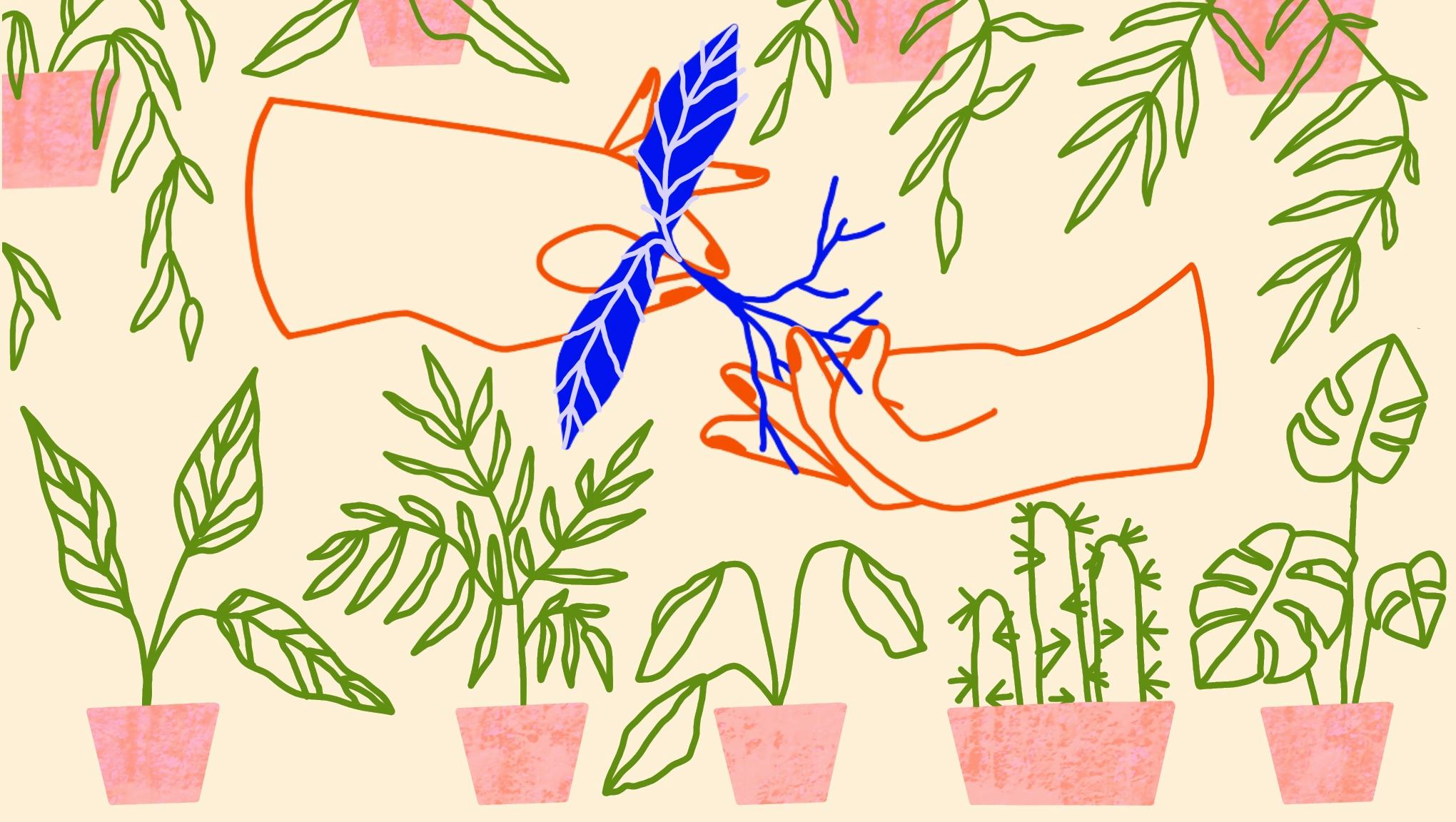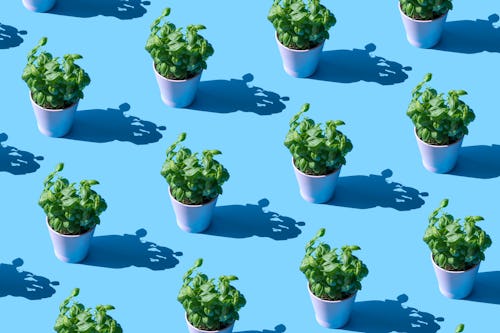
Millennials might not be having kids (multiple economic collapses, a global pandemic, and looming climate crisis aren't exactly sexy), but they are still taking up the role of caregivers. The recipients of that care just happen to be houseplants. According to the National Gardening Survey, the average gardener is younger and more diverse than ever before, with previously underrepresented groups including people of color and apartment dwellers increasingly getting in on the trend.
The appeal of houseplants are pretty simple: They look lovely and bring little reminders of nature's beauty into your home. They also bring with them a positive health impact. Studies have found the presence of houseplants makes people feel more comfortable, providing a soothing effect. They also may help with conditions ranging from depression and anxiety to dementia, and some even improve your environment by cleaning the air. You get all that, in exchange for occasional watering and re-potting.
Bringing plants into your house is a great bit of self-care, but it's important to not confuse being surrounded by plants as going green. If anything, the increased demand for houseplants in recent years has led to practices that may ultimately be bad for the planet. Houseplants are now a nearly $2 billion industry — which is growing rapidly — and meeting that demand has led to many growers trying to grow plants faster and ship them longer distances, creating a significant carbon footprint along the way.
So how do you keep the greenery in your home, well, green? Here are a few ways to ensure your apartment jungle is good for the Earth.
Avoid peat
Odds are, most of the houseplants that have taken up residency in your home were grown in peat. On the surface, it would seem like there is nothing wrong with this. After all, peat is partially decayed organic matter that plants absolutely love. The problem is that it's pretty bad for the planet — and it has to do with how peat is acquired.
Peatlands are a type of wetlands where oxygen barely reaches the soil. Think of it as a bog-like environment where plants often can't get the nutrients they need, causing them to die and partially decompose. This is what forms peat moss.
The problem is that peat grows between 1 to 10 millimetres per year, meaning it takes a long time to make a meaningful amount of it; it can take 1,000 years to produce a full yard. Unfortunately, houseplants burn through this material, and the vast majority of growers use it, meaning we're using peat at unsustainable rates.
When it comes to making houseplants more sustainable, "eliminating peat is the best place to start," Harriet Thompson, a horticulturalist and sustainability expert, tells Mic. "Doing so will reduce the environmental impact you as an individual have on the environment and will also ensure that the industry will have to change in order to keep up with the demand of peat-free houseplants."

According to Thompson, peat bogs hold more carbon than the forests of France, Britain, and Germany combined, and studies have found peat to be a more effective storer of carbon than trees. By mining these regions, we're not only using up a resource that is finite and slow to regenerate, we're also destroying reliable carbon sinks that suck up some of our emissions. Worse, the carbon held by that peat is released when the material is mined. "This is an insane amount of carbon that is released into the atmosphere when it is extracted," Thompson warns. "Not to mention the loss of wildlife and flora and fauna that comes with extraction."
Luckily, there are solid peat alternatives out there. You might not find them if you are buying your houseplants from a big box store, but local sellers are more likely to utilize sustainable growing methods. Compost and leaf mold are recommended as environmentally friendly alternatives that can be purchased from pretty much any plant seller or can be made in your own backyard. If you don't have a yard but still want to make compost, consider worm composting. This can be done indoors and produces a final product called vermicompost — a.k.a. worm waste — that plants absolutely love.
No longer buying peat-based plants is the best thing you can do, according to Thompson, as it shows there is a growing market for environmentally friendly growing practices. For the plants that you already have, simply re-pot them in an organic alternative. Check the label when you head to the store to buy compost, and make sure that what you are getting is peat-free.
Go natural
Another great way to cut down on the environmental impact of your houseplant hobby, according to Thompson, is by utilizing natural pest control or bio-control. "This ensures that no nasty chemicals are entering a person's home, it creates natural resilience in your plants, and it ensures that any other insect isn't harmed in the care of your plants," she says.

If you notice pests, bugs, mites, or other invaders who may be damaging your plants, it can be tempting to purchase the strongest chemical killer that you can find and douse the plants to make sure that you end the problem immediately. But there are more natural solutions that don't require these chemical mixes. Soap water is a simple, two-ingredient insecticide that you can make in a snap and should kill many bugs upon contact. You can also dab a cotton swab with rubbing alcohol and gently work your way across the leaves of your plants to kill pests. Organic neem oil is also an excellent natural pest control tool, and it has a residual effect so you don't have to spray every day.
Reuse and recycle
Houseplants can be a source of a lot of excess. From water to plastic pots, it's easy to end up using lots of resources to keep these plants alive. Thompson pointed out how easy it can be to use your existing resources in a way that minimizes impact.
"My personal plants are fed with the water out of my fish tank," she says. "This feeds them naturally and means that less water goes to waste." She recommends collecting rain water and using that to water your plants whenever possible.
As for the plastic pots that plants so often come in, Thompson recommends that you reuse them whenever possible. "You can even head to your local garden center and ask if they have any old pots that you could re-use," she says.
Cut down on plant miles
One of the other ways that houseplants rack up a surprisingly large carbon footprint is by travel. Many plants come from large nurseries that grow and produce the plants in massive quantities. They are then shipped all over the country, which can result in a lot of gas being burned in order to bring them to a plant seller near you.
While it can be hard to know exactly where your plants are coming from, one of the best ways to reduce "plant miles" is by buying or trading cuttings. Plant cuttings are pieces of existing plants that will grow into a new one. The best part of plant cuttings is that you can often trade them with other houseplant aficionados. Check local groups on Facebook and other social networks like Nextdoor. You may be surprised to find a bustling plant-lover community with people happy to share cuttings, which will let you try out and grow a bunch of new plants without requiring them to be transported hundreds of miles to you.







